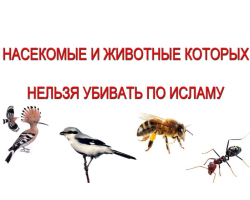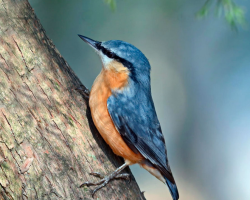This article will talk about daytime birds of our planet.
Content
- Squad "Daytime Birds": photo and brief description of the class of falcon
- Squad "Daytime Birds": description and photo of hawk -like
- Squad "Daytime Birds": a family of secretaries
- Squad "Daytime Birds": the family of the skewers
- Squad "Daytime Birds": American vultures
- Video: daytime birds - grade 7
The bird is considered predatory that pursues other animals with the aim of getting food, that is, hunts in flight. Daytime birds use their sharp vision, curved beaks and strong claws to hunt live prey. In the world there are about 300 varieties of birds of prey, including about 50 species in Russia.
The “day predatory birds” detachment is divided into two categories of daytime hunting - Falconiformes and Accipitriformes: falcon (falcons) and hackneyed, respectively. The hazel -like are 4 classes: hawk (the largest in numbers), skewers, secretaries and American vultures. But there is also a detachment of night birds of birds - StrigifORMES, which belong to social species (owl and sipuhi).
Squad "Daytime Birds": photo and brief description of the class of falcon
Daytime birds in a falcon detachment contain 11 families and 60 species.
- Small empty (steppe)
This is a small falconer predator. The female differs from the male size and color of the plumage, so it is impossible to confuse them. They have only dark eyes, framed by yellow, and a strong beak. The male has a blue-gray head, the back is reddish-brown, the lower part of a light shade, without a pattern, and the tail feathers are blue-gray with a black border. The female has a rusty brown back and red tail feathers, which are covered with black stripes, are framed at the edges with a white contour.
Listed in the Red Book of Russia!

- Merlin
Belongs to the family of Sokols of North America and the northern latitudes of Eurasia, for example, in Norway, Sweden, Finland, Iceland and Siberia. This is a fairly large bird about 55-60 cm. Females and males look the same, but the female is larger and heavier than 0.5-1 kg. Depending on the area of \u200b\u200bresidence, their upper plumage varies from a brownish-gray or with a blue tint to a light gray, the abdominal region is always light. They have dark crashes throughout the body, the so -called mustache near the section of the mouth is barely noticeable. On the beak there is a tooth characteristic of the falcons, the paws are yellow.
The population is reduced!

- Sapsan
Knowed by their speed, Sapsans are the fastest on the planet. Their vertical speed during diving is more than 300 km/h, with a normal flight during hunting, they can reach 100 km/h. Females are larger than males. The body length ranges from 34-50 cm, the weight of the male to 750 g, the females reach 1, 5 kg. The wingspan is up to 1.2 m. In both sexes, aspirated-gray with a black tint of wings, back and hood, the stomachs are pale, marked with brown stripes.
The population is reduced!

Squad "Daytime Birds": description and photo of hawk -like
The “daytime birds” detachment of the hawks family has about 70 births, but we will celebrate the brightest representatives.
- Hawk-wiper
He is even considered the largest bird of his species. Females are larger than males. Males reach 600-1100 g with a length of up to 55 cm, and females-up to 60 cm and 860-1600 g. He has a cruel expression on the face with bright red or red-brown eyes (in young individuals they are yellow) and a characteristic white eyebrow from feathers. Its wide wings with a scale of 100-115 cm allow him to hunt at high speed, intertwining with trees, and his long legs and claws can catch his prey in flight.
They feed on birds, reptiles and mammals, such as hares, hazel grouse, wild and squirrels. The color of the pen can be from blue-gray to black, the abdominal region is light in a pickimal strip. Young individuals have brown feathers. The beak is black and yellow with a short hook, but powerful and stocky.

- A quail
It belongs to the hawk -like family. It can be seen throughout Eurasia and in northern Africa. The quail can weigh from 180 to 340. Moreover, the female is almost 2 times heavier. The male has a length of up to 34 cm with a scale up to 60-64 cm, and the female-35-41 cm height and 70-80 cm of wingspan. The lower part of the prapeal plumage is slightly reddish, it seems red at a distance, and the upper one is blue-gray in a dark shade. The head is small, with yellow eyes and a yellow eye ring around it. The quail usually uses the effect of surprise when hunting.

- Smoky kite
It also belongs to the Hawki family. The female and the male look the same in their plumage. The difference between them is in size and weight. The female is slightly larger and heavier, on average weight varies from 230 to 250 g, the size is up to 28-35 cm. The upper plumage from light gray to blue-gray, head, neck, lower part and tail are white. If they are sitting, they have black traces, as if on their shoulders. In flight, the wings and ends of the wings below are black. The legs are yellow, the beak is dark, and the red eyes are framed by black feathers. The scope of its wings is about 75 cm. It lives in the southern latitudes of Asia, the savannah of Africa, India and Spain.

- Black kite
It is also a representative of the Daily Birds of the Birds, the hawk family. It belongs to the migratory birds of Europe and the local birds of Asia and Australia. Black kite of 50-60 cm in size and wingspan about 1.45-1.55 m. There are no gender plumage, but the difference lies in size and weight. The female is larger and harder. The plumage of black kite from medium to dark brown color, the lower side is thinly dashed, sometimes with a red tint. The wings are black, and the head and neck are light with thin black lines. Eyes are light, yellow beak with black hook. The tail is slightly bifurcated.

- Red kite
It is found in Southern and Central Europe, Asia, Scandinavia and the Caucasus. Red kite is one of the rarest birds of birds in Europe due to the constant persecution of people. Red kite in size up to 60-70 cm, weighing up to 900-1400 g. Wednesday of its habitat beech, oak and mixed forests with an adjacent cultural landscape in which they can hunt. The red kite has a light brown or rusty red back, a brighter head with amber eyes. It is characterized by a bifurcated tail. As we see in the photo, from below very interesting colors, if the bird is in flight.
On the verge of disappearance!

- Marsh harrier
These are small birds of the hawk family up to 750 g, up to 36-43 cm long and with a scale of 110-140 cm. Females are larger than males. They have a very interesting color from brown, white and brown or black. They hunt quite low above the ground, mainly near reservoirs and reed thickets. The basis of the diet is frogs, fish, eggs and rodents.

- Buzzard
It is quite large with wide rounded wings, a short neck and tail. Its length is 51-57 cm, wingspan up to 130 cm. The weight of the male is 550-1000 g, the females-700-1300 g. When gliding and taking off, he often holds his wings in a shallow “V”, and the tail swells. Birds have a different color from all dark brown to much more pale varieties, but everyone has dark ends of the wings. Their mournful meow can be mistaken for a cat. The basis of food is small mammals, birds and carrion. Sometimes even rainworms and large insects are used, when there are not enough other victims.

- Honey kanyuk or sore
This is a large predatory bird, which is considered quite rare. She has narrow wings, but with a scale of 1.2 m, a long tail. The plumage is very variable depending on age, therefore it can be with a plain brown or light brown tint, as well as with small strokes resembling scales. The upper side is in most dark brown color. Females are usually more colorful with white or gray framing, males with a modest brown-black color. It is mainly consumed by the larvae of the OS and bees. Their natural habitat is a wooded area.

- Golden eagle
The Golden Eagle belongs to the Hawk family. Berkuts, like other birds of prey, were illegally caught, and died out in some regions. Now they can be found only in the northern regions. Females are larger and harder. Adult berchuts have uniform dark brown plumage, on the head and neck it is light brown or yellowish-brown, dark brown eyes, strong beaks with a dark tip, legs feathered with large yellow claws.
The habitat of the golden eagle is located in mountain ranges, mainly at high altitudes. Their food consists of a groundhog, rabbit, deer, partridges, grouse, ravens. Gorestries can transfer prey for young animals weighing up to 12 kg. They themselves are large - up to 93 cm in length, up to 4.6 (males) and up to 6.7 kg (females). Wingspan up to 240 cm.

- Cleaning eagles
These are the largest birds of Australia with a massive wingspan from 1.8 to 2.3 meters. Females are larger than males and can reach 5.3 kg. Both sexes are reddish-brown, with age darken to almost black color. They are easy to identify in flight on characteristic tails that flare up before narrowing to the point in the middle. Cleaning eagles are mainly hunters, but they also feed on carrion. Therefore, they can be seen nearby, as they select corpses on the rural road.

- White -headed eagle
It is the largest predatory bird. There are eight different types of sea eagles. In Europe, the white-tailed eagle refers to local birds, and in Russia to migratory birds. But its main habitat is Canada and the USA, Mexico. Its size is 70-95 cm, wingspan up to 1.8-2.5 m and weight to 3-6.3 kg. Males are smaller, so they have the first limits of indicators. An adult white -tailed eagle can be recognized by a large yellow beak, a bright head and a white tail. This is the most famous representative of his family.

- Blue -brown sea eagle
With a scale of wings up to 2.2 meters, blissful eagles are almost as large as wedge -tailed eagles. And even have a tail of a similar shape, but the similarity ends. Faithful to their names, adults have a white lower body with gray wings and a powerful hooked beak. Young sea eagles are pale gray and do not have the complete plumage of adults until they turn 5 or 6 years old. They are coastal predators and feed mainly on fish caught in the sea or rivers in flight. Their weight reaches 4.5 kg, and the body length is up to 90 cm.

- Wencenoid eagle
It refers to the Hawki family and is rightfully considered the most dangerous predator from the “day predatory birds” detachment. Its weight is about 7 kg, and the scope of its wings reaches 1.5 to 2 meters. His back is brown-gray, a red or beige stomach with dark feathers. In flight, it is revealed by the alternation of dark brown and white stripes framed by the tail and wings. Young birds have lighter plumages. He has very strong paws. The crowned eagle in Africa lives. It feeds mainly with monkeys and small antelopes. When the danger approaches, it raises feathers on the back of the head.
Can attack Babuins and people!

- Vulture-Griffon
This is one of the predatory birds of the Hawki family, related to representatives of bearded men. Males and females of the neck look the same. Their head is a little bald, with folds and with dirty gray skin, smoothly turning into the beak. It is black and strong enough. The legs and fingers are dark gray, strong and with sharp claws. The plumage is quite diverse in brown range, the abdominal region, of course, lighter. The scope of the wings of the neck is about 165 cm, weight within 1.5-2.2 kg, length up to 60-70 cm. Their food consists mainly of meat, such as dead sheep, goats and cattle.

Squad "Daytime Birds": a family of secretaries
The class of secretaries of the “Daytime Birds” detachment consists of only one species!
- Secretary bird
A predatory bird on the dry Highlands of Africa, the only secretaries in its class and as a living predatory bird of ground habits. Refers to the category of ceremonials. This is a long -legged bird with a thin, but powerful body with a 1.2 m long and a wingspan up to 2.1 meters. Weight sometimes reaches 4 kg. Its difference is the feathers of a black crest, which are very similar to pens-pero, which was once used by secretaries. She has a light gray body, black hips, as well as a white wing lining. Her tail has a pair of long central streamers. It mainly feeds on snakes and lizards, but also eats mammals and even insects.

Squad "Daytime Birds": the family of the skewers
The daily birds of the Birds of the Skopin family also remained in the person of only one representative.
- Osprey
This is a common predator of both hemispheres, quite overall: with a length of up to 55-58 cm, weighing from 1200-14600 to 1600-2000, as a rule, there are more females. The scope of wings, respectively, varies from 145 to 170 cm. The color of the upper plumage of brown color. But the head, neck and abdominal area are white. Around the neck you can notice a necklace of dark interspersed. They are also characterized by the “makeup” of the camouflager - a brown strip of a dark shade passes from the eyes.
Yellow eyes, in young individuals - orange. It feeds on almost only fish, it occupies about 99%of the total diet. Skopes, as a rule, multiply at the tops of the rocks or at other high points, such as power supports or light towers, in large nests that are used year after year. They are difficult to detect when they hunt, as they slide low above the water.

Squad "Daytime Birds": American vultures
Daytime birds of the class of American vultures also have few species - only 7, most of them, unfortunately, died out.
- California Condor
A very rare species of large birds that can fly. The range of their weight is from 7 to 14 kg, the length is up to 110-140 cm, and the wingspan is 240-305 cm. The diet is based almost exclusively on the fall. It has black plumage with white feathers on the inside, head and neck without feathers, with folds. Around the neck, a collar made of sharp sticking feathers.

- Andian Condor
This is the only representative of the monopoly family of Condor. One of the largest birds, in which the male is heavier than the female - up to 15 kg and 11 kg, respectively. The wingspan reaches 270-310 cm. It has a black color with old stripes on the wings and a white collar, which has more males, a head without feathers.

- Royal vulture
The brightest representatives of this family. They also have a bald head and neck, but with bright growths and colors, white plumage with black wings and tail. The length can reach up to 85 cm, weight up to 4.5 kg, and the wingspan of up to 2 m. They feed on carrion, but also fish, snakes, mammals.

- Griff-Urubu or American Black Qatarka
The plumage is black, only in the lower part is light, the head and neck are bald and wrinkled, dark gray. It lives in North and South America of the tropical zone. It feeds on carrion.

- Large yellow -headed Qatarta
Representative of South America. Black plumage with green or purple glow. The name was obtained for a bright yellow or orange color of the head.

- Malaya more Karta
Representative of Central and South America. They feed on carrion.

- Grif-indoor
Bird of North and South America. It has a very small red head, black and brown plumage, on wings with a gray-silver tint.

Squad "Daytime Birds" - this special birds that cause fear and admiration at the same time. They look graceful and majestic, while they can be dangerous.







